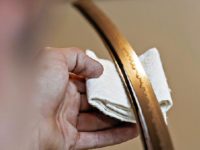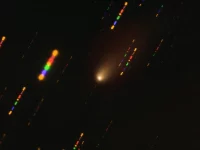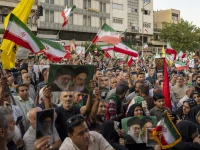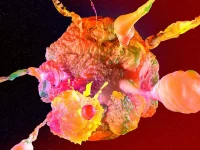Long story. Cocaine Cowgirl by Jennie Erin Smith. Part 2/12.
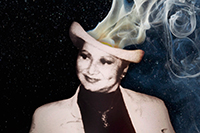
The life and violent times of Griselda Blanco, Pablo Escobar’s feared rival and the most notorious, murderous queen-pin of the Colombian drug wars.
The day Griselda died, I was nine months into a yearlong Spanish course in Medellin. I’d come to Medellin not out of fascination with its violent legacy but the opposite: Medellin had cleaned up immensely. It was gaining a reputation as a safe, comfortable place to live, with good universities and huge parks and a slick public transport system. People did not seal themselves up in compounds behind walls topped with razor wire. Instead, a growing middle class moved about without fear, jogging, running errands, walking their purebred dogs at any hour. Expats flocked to Medellîn, setting up businesses and doing whatever they could to extend their visas. It seemed perverse that in this new and optimist Medellîn, Griselda could have been murdered over something dating back to the Escobar era. But it was intriguing to think that it might be true, that the old Medellin lurked menacingly close to the new.
Two weeks after Griselda’s murder, I stood at the foot of her grave, in the Jardines Montesacro, where I had expected, given the conspicuous displays of affection at her funeral, to see a mountain of candies and flowers. I thought I’d find notes, cards, something that would shed some light on Griselda’s attachments in her final years, on who she had become. Her grave, though, turned out to be a patch of dirt, yet to be covered in grass and marked only by a desiccated arrangement of sunflowers. In the cemetery’s offices, a woman told me that Griselda’s headstone could not be completed because no one could get in touch with the Blanco family. The phone numbers they’d left did not work.
Walking out of t he office, I noticed a group of people wearing shorts, milling around Pablo Escobar’s grave. In Medellin, only foreigners wear shorts. It was the English language Pablo Escobar tour, which makes stops at Pablo’s childhood home, his high-rise apartment building in El Poblado that was bombed by his rivals in 1988, the hideout on whose tiled rooftop he was shot dead five years later by police, and, of course, his grave.
The Escobar family grave must have been a headache for cemetery officials. Its border masonry was damaged, and the grass surrounding it had been worn to raw earth from ali the foot traffic. In the early years, it attracted mostly local pilgrims and Escobar’s harridan of a mother, Dona Hermilda. But now, with Dona Hermilda buried there too and Medellin drawing young Americans and Britons, rounded up daily from their hostels. I watched as one couple took turns lying atop the grave with arms and legs outstretched, as though making snow angels. I’d heard that other tourists had snorted cocaine off Escobar’s headstone, which, given its dark, smooth, mirror like surface, was not implausible. The guide, a bottom-heavy woman with Elvira hair and long acrylic fingernails, began lecturing in English that sounded like she’d learned it on a drug corner in the Bronx. I pointed her toward Griselda’s grave and asked her if it would be included on future tours. She didn’t think so, but she briefed the group on Griselda anyway. « She killed a lot of people. She pay everything in the United States. She went to the jail twenty years, they say she was retire, you know ? So, never ends. » The next and last stop on the tour, the guide announced, was the home of Roberto Escobar, Pablo’s older brother, where everyone could drink coffee with him and ask him « anything you like. » I negotiated for myself a modest discount on the $35 tour, having already missed three of its five stops, and got in the van.
Roberto Escobar’s who use sat on a hill in one of the most desirable sections of El Poblado. Roberto was cloudy-eyed, wearing thick, rounded glasses, and so hard of hearing you had to speak directly into his good ear. A one time professional bicyclist, Roberto had played a tangential, mostly administrative role in his brother’s organization. He had nevertheless served a long sentence for arms trafficking, kidnapping, money laundering, and drug smuggling following his brother’s death. Soon after entering prison, he opened a letter bomb addressed to him, which left him nearly blind and deaf.
He was reputed to be feeble-minded. He’d earned this reputation in part by embracing as a long-lost nephew a self styled rapper who claimed to be Pablo’s illegitimate son. « Pablo Escobar Jr. » visited Medellin in 2009 to bear-hug Roberto and weep pitifully at Pablo’s grave. He was subsequently exposed as José Rodrîguez Chamberlain, a New Jersey resident with a history of extortion.
Roberto did not impress me as feeble-minded, just shameless, quick to exploit his brother’s legacy in any way that presented itself to him, no matter how absurd or indecent. He’d written a series of self-serving books about Pablo and appeared to be the main beneficiary of the Escobar tour proceeds, which he said he was using to personally seek a cure for AIDS. He deflected uncomfortable questions from his guests with shrewd non sequiturs: « Pablo loved beans. » « My mother was a saint. » But he did not mind talking about Griselda Blanco.
« Whatever happened to her was because of something recent, » Roberto told me, sitting on his patio, where we all drank instant coffee out of disposable cups. Nothing else made sense to him, he said. Even he, the brother of a man who killed and made enemies at an arder of magnitude great erthan Griselda Blanco, now traveled anywhere he liked in Medellin without fear.
Griselda, he said, had not been hiding in the eight years since her deportation, nor did she have to. « Everyone knew where she was, » he said.
Within weeks it became clear to me that Roberto Escobar was right. Griselda hadn’t been hiding at all. The Catholic university where I studied Spanish was in a leafy upper-middle-class neighborhood called Laureles. In the 1970s, when Laureles was considered the best neighborhoodin Medellin, Griselda had moved there with her sons, not wanting to raise them in Barrio Antioquia. They had lived right across from the university campus, in a house she still owned when she died; it was a furniture showroom now.
Griselda maint ained other properties in the neighborhood, which she rented. The residents and employees of these buildings knew Griselda in her later years, and liked her very much. They hadchatted with heron the street; served her mazamorra in their homes; gotten lifts from her in her car, a Mazda 6 sedan with darkly tinted windows. Sorne had been guests in her home.
They described her as charming, generous, impeccably dressed. If y ou had not known her history, they assured me, you could never have guessed. From them I learned about her social life. Griselda had remained quite close with her family. Her sole surviving sibling, a sister named Nury, lived in Barrio Antioquia, in who use Griselda had helped her build; Griselda’s nieces lived there too. I learned, also, that a Barrio Antioquia woman named Carmen, who was Griselda’s age or just a few years younger, had in recent years become Griselda’s constant companion.
Griselda had never characterized their relationship to anyone, even her own family members, as romantic. But she cheerfully acknowledged that she’d had nothing to do with men for decades.
Most nights, Carmen slept over at Blanco’s ample, marble-floored house in El Poblado. In the mornings, unless Griselda was expecting guests, the two women would shower, breakfast, and drive in Griselda’s Mazda to Carmen’s house and clothing store in Barrio Antioquia. Griselda’s maid would send the pair off with a lunch packed for the two of them plus the other members of Carmen’s household: Carmen’s son Franklin and his girlfriend, Yésica, who at the time of Griselda’s death was seven months pregnant. (The names of certain individuals have been changed.)
It was an oddly entangled little group, as Yésica had only a few years earlier been the lover of Griselda’s oldest son, Dixon Trujillo, and had lived with Dixon in Griselda’s El Poblado home. But Griselda could hardly blame Yésica for switching loyalties, as Dixon, now in his fifties, had become helplessly addicted to freebase cocaïne and barely left his room.
In Barrio Antioquia, Carmen sold clothes, Franklin sold drugs, and Yésica did not work. Griselda kept the whole clan provisioned, bringing them their groceries and toiletries in addition to the daily lunch. At around 6:oo every evening, Carmen and Griselda returned to El Poblado to sleep. I learned from a tenant of Griselda’s that, within days of the murder, Carmen had begun answering Griselda’s cell phone and driving her Mazda. Franklin, Carmen’s son, was collecting the rents on sorne of Griselda’s apartments.
A friend of Griselda’s from Laureles, who was abroad but in touch with the family, said that Carmen was still sleeping at Griselda’s house, even with Griselda gone, and that Yésica, now in her final weeks of pregnancy, had started sleeping there, too. There were others, strangers passing through the house. Only hours after her death, there had been strangers inside Griselda’s bedroom, where she had slept under a painting of Our Lady of Guadalupe. Her bedroom was also where she kept her cash and her considerable collection of jewelry. Years before, when she lived in the United States, Griselda wore a diamond ring once owned by Eva Peron, but she’d been forced to sell it to pay her legal fee:s.
Michael Blanco, Griselda’s youngest son, was calling the house every day from Miami, where he lived. He had been forced to miss his mother’s funeral and could not come to Colombia to deal with her estate, as he was under house arrest, awaiting trial on drug charges. All Michael could do right now was demand that the maid lock up his mother’s bedroom. The maid was scared around the newcomers and wanted to quit, but Michael persuaded her to stay and continue reporting to him daily. He said he was concerned about Dixon, who was asleep or on drugs most of the time.
Griselda had cared for Dixon for years, and now he was in dubious hands. One afternoon in October, I hired a taxi to take me by Carmen’s home and shop, where Griselda had spent so much of her time. I was told it was easy to find, because Barrio Antioquia was small and because the store was marked by a bright pink sign. It was raining lightly as the taxi drove parallel to the runway of the Olaya Herrera airport. In Griselda’s heyday, this had been Medellin’s international airport, but now it serves only regional flights and charters, sending a steady stream of little planes up over the mountains. My driver was a cheerful kid of about twenty, wearing braces. He turned onto Barrio Antioquia’s main drag.
Barrio Antioquia proved to be a slim rectangle of a neighborhood, just twelve derelict blocks abutting the grassy fields of the airport. On its streets men stalked their corners and flipped through wads of bills. In Medellin there are children everywhere, but the only trace of them I saw here was an elementary school enclosed by not the usual high fence, but sorne sort of protective cage. In nearly all of the barrio’s squat two-story homes, blinds were drawn.
There are worse neighborhoods in Medellin than Barrio Antioquia, but they are high in the surrounding hills and isolated. Barrio Antioquia sit in the center of the city, nestled between two of its choicest residential districts: Laureles and El Poblado.
« It’s all drugs, » my driver said. ‘That’s the only reason anyone comes here. » He said he didn’t mind taking passengers into the barrio to buy cocaïne, and pointed out a wide low building that he said had been one of Pablo Escobar’s first processing labs. It appeared to be still in use in sorne illegal capacity or other; the windows had been boarded. Its rare for a person not deliberately seeking cocaïne to see or be offered it in Medellin, but when our cab would slow, men approached from the corners.
We turned onto a residential street, to a two-story house whose ground floor was marked by a pink sign reading CARMEN’S FASHIONS. Except for the sign, the place looked nothing like a business. There were no clothes visible from the street, only grated windows, drawn blinds, and ripped screens. We parked awhile, a few spaces away from the house, and a middle-aged woman appeared at the door, letting a scruffy blond dog outside to pee.
Carmen was wearing slacks and a loose blouse. She was made up but not heavily, small in stature and beady-eyed with swept-up gray hair. She had not noticed me, or the parked taxi-yellow cabs are ubiquitous in Medellin. She let the dog back in, glancing quickly bath ways as she did.
As we pulled away, I asked the driver to take us past the butcher shop « where the lady was killed. » He knew exactly what I was talking about. He offered his opinion that it was because of the telenovela.
I would come to believe that it was because of Barrio Antioquia.
(End of part 2/12 To be continued)


